This is the second post in a series of photos entitled Faces and Places. To get the idea of the previous blogs and ones to come, click on my first post: @osm0sis/faces-and-places-nepal-series

Camera: Samsung Galaxy S4
Location: Kathmandu, Nepal
Meet Pauravi! My friend Prakash’s first daughter. She is a little beauty and is growing up faster than the speed of light. This photo was taken on her first rice feeding day, which is celebrated through a ceremony known as Pasni.
Detailed description of Pasni (extracts from Wikipedia, photos by me):
Pasni is held at 6 months for boys and 5 months for girls. An auspicious date and time is chosen by an astrologer, usually a Hindu, and all the closest relatives are invited to witness and to celebrate. The rice is the first and easily digestible solid food baby eats. This custom varies with the variation of religion, caste and also place. Like Mongolian Gurung, Magar serve with kheer (rice pudding) which is rice cooked with milk and sugar similarly Brahmin, Kshatris also do same. Whereas myriads of dishes are prepared and served in Newar (Pauravi’s family is Newar). The main rice dish is served in one giant (often woven) plate of leaves. The remaining dishes, typically 84, are served around the main dish.
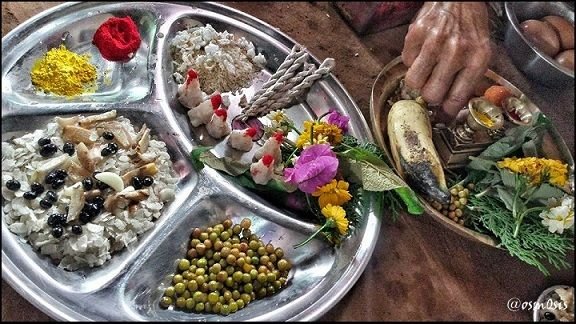
The baby is dressed in saffron silk cloth (although modern families will often put a diaper on, to minimize accidents.) The baby is held by the paternal aunt while the entire family feed her or him the first taste of rice. It is the mother's right to feed the child first. This is because symbolically, after breastfeeding the child, she is asking the gods to bless the child who is now entering the world of other regular food. Musicians playing traditional music can be invited to start the function at the given auspicious time. After the baby has eaten, she or he will undergo another extensive puja (worship ceremony) often led by a priest and accompanied by chanting from ancient scriptures.
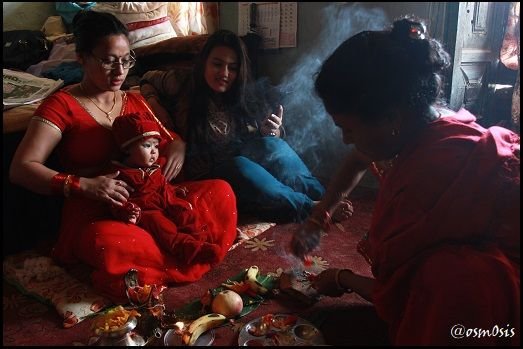
For the rest of the day, the baby is dressed in a special outfit, usually made of red velvet and embroidered with silver and golden thread. The child is offered gifts, money by close relatives, and gold and silver ornaments by grandparents. These ornaments include heavy silver anklets (kalli) carved with dragon at both the ends to keep the bad omens away from baby. These ornaments can be handed on as heirlooms.
Silver anklets (kalli) | Gold and silver bracelets |
|---|---|
 | 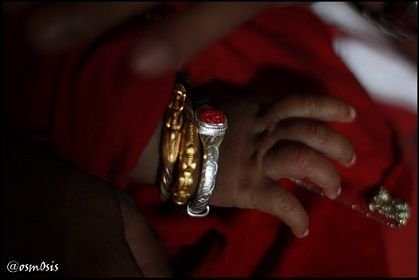 |
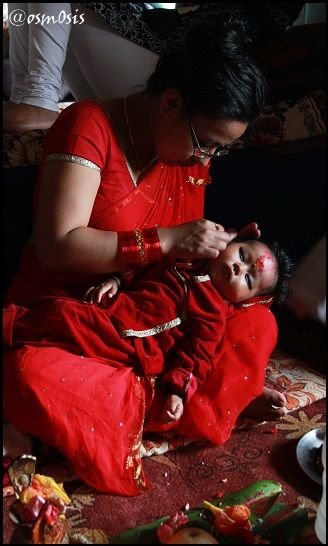
(Pauravi’s mother carefully putting new earrings on her while she sleeps)
The ceremony varies from family to family as they incorporate their own long-standing family traditions.
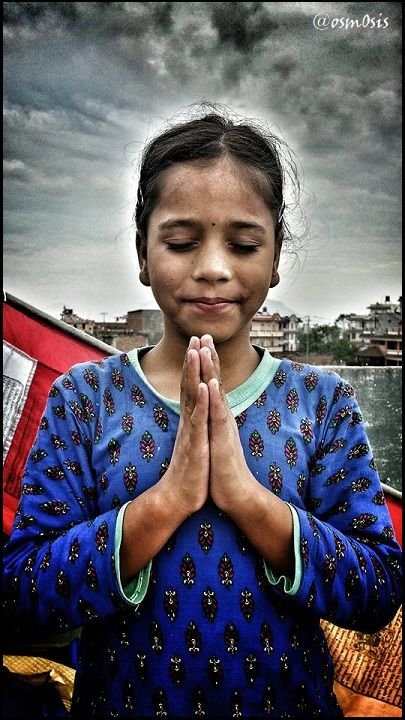
Camera: Samsung Galaxy S4
Location: Kathmandu, Nepal
Namaste
My soul honors your soul
I honor the place in you where the entire universe resides.
I honor the light, love, truth, beauty and peace within you,
Because it is also within me.
In sharing these things we are united, we are the same,
We are one.
Sylvia
“Learning is not a race for information, it is a walk of discovery” - Jane Healy
